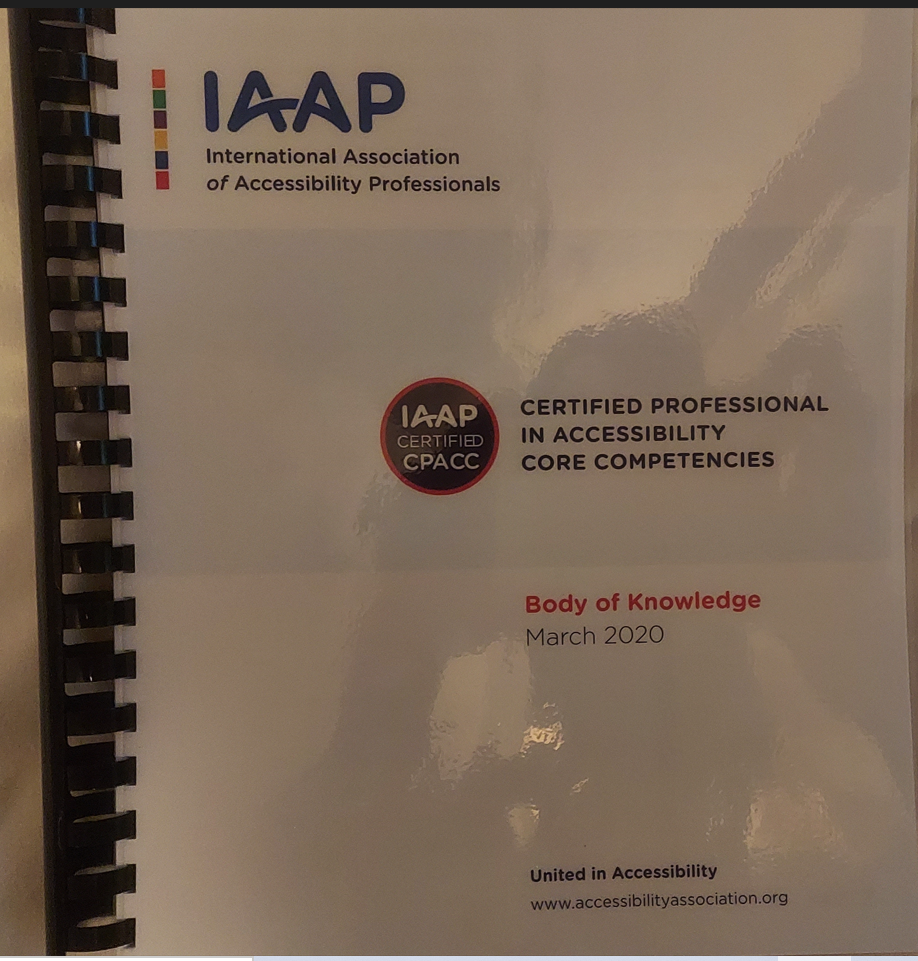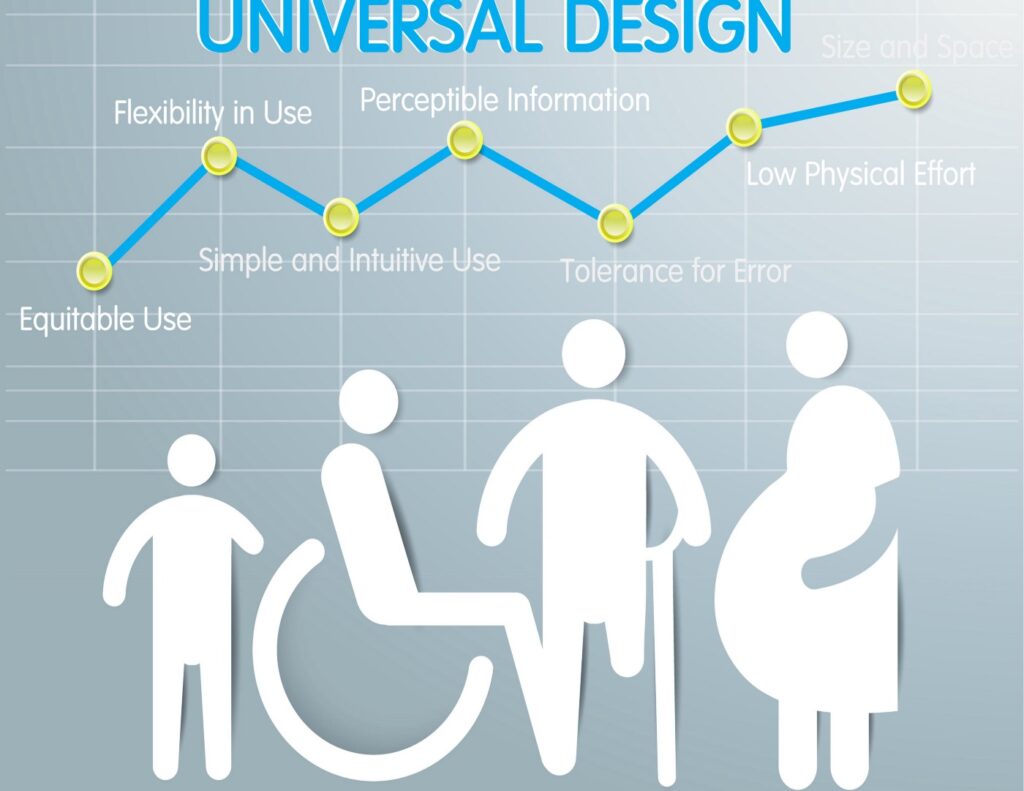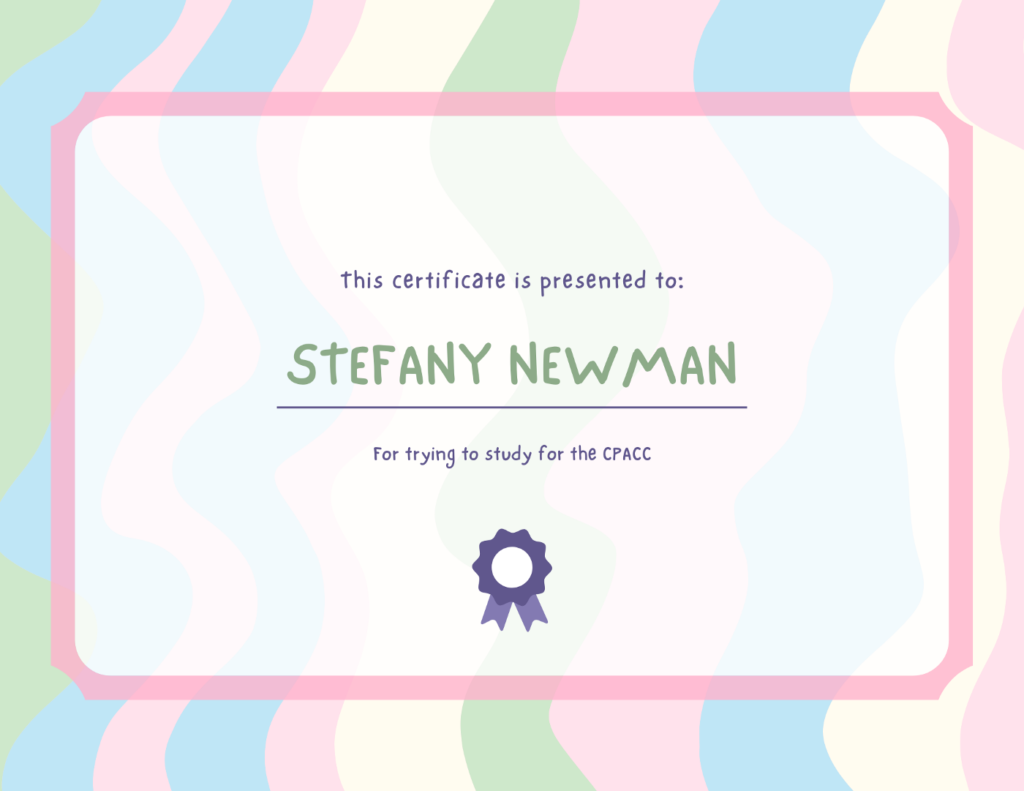What I learned about accessibility while preparing for the CPACC, as an engineer
By Stefany Newman | Medium, August 12, 2022
Summary: I learned about laws, models of accessibility, maturity at organizations, universal design, and my own arrogance thinking the exam would be easy.

I was told that the exam would be easy if you worked in the accessibility field for a few years, but it never occurred to me that I am an engineer and this isn’t an engineering exam.
So if you are an accessibility engineer, I suggest taking the Web Accessibility Specialist certificate instead. However, I am happy I took the harder road with the CPACC because of what I learned preparing for it.
Different models of accessibility
What is an accessibility model? A model is two things — it is a foundation which is used to make laws, and, to instruct people how to help disabled folks. For example, the Social model states that barriers exist for disabled due to society’s generally exclusive and dismissive attitudes. So ordinary people like you and me can vote, protest, and use social media to nudge lawmakers to make and expand accessibility laws.
In another example, the Medical model claims that disabled people have barriers because of their physical conditions and that the solution to the root of the inequity is to physically cure or heal the impairment. What that means for you and me is that we can donate our bodies to science, volunteer or donate to organizations that help medical research, and study medicine to help find a cure.
In my experience, these two models (Social and Medical) were the only I had dealt with. In preparing for the exam, I learned that there are many others. The central ones are:
- Social
- Medical
- Economic
- Functional Solutions
- Social / Identity
- Charity
- Biopsychosocial
What fascinates me is that I found out we engineers belong to the Functional Solutions model, since we work on solutions right now to help disabled people browse the internet and use apps.
The models of accessibility, simplified:
Accessibility Laws

There are so many of those. The exam focuses on the American, European, African, and Japanese accessibility laws. Don’t do what I did and read about the Japanese accessibility laws 30 minutes before the exam and then fail the question.
In a nutshell, the US has worse accessibility laws than the European Union whose accessibility law, called EN 301 549 (the name will haunt you), forces all members of the European Union to get their ducks in a row and make their websites, and all other electronic stuff like PDFs, even if they are not public, accessible. I think something as strict as this will benefit the US. Our accessibility laws are very lax, difficult to understand, and don’t sound scary enough to those who ignore them.
Important to remember that at this time of writing, the US and Japan follow WCAG 2.0 which was released in 2008 (The movie Twilight was released the same year, in case you have trouble remembering), while the European Union follows WCAG 2.1, released in 2018 (Same year the fan fiction movie of Twilight, Fifty Shades Freed was released).
Universal Design

I didn’t know that Universal Design had rules and history. I thought it was something that appeared out of nowhere and no one invented it, much like brushing your teeth, or falling asleep during Zoom meetings.
Universal Design was created in 1997 (if you have trouble remembering the year, just remember I was 4 years old at the time), by a bunch of architects who were much more smarter than the rest since they realized that maybe making super tight entryways and putting stairs everywhere wasn’t the best design for disabled or abled people.
Universal Design for Learning is interesting child of Universal Design and it helped me see how inaccessible my courses actually are, since I only offer one way for students to show their knowledge, by a quiz, and UDL discourages this, since every person is unique, they might prefer a different way of showing their knowledge, maybe via video submission, essay, or recording an audio. Also, in Udemy, all the courses are in a video format, again, ignoring the UDL principle of providing multiple ways of people to learn.
So that encouraged me to start the blog you are reading right now and to combine it with my YouTube channel, so students can read, listen and view the educational material.
Disabilities, difference between assistive technology and adaptive strategy, and maturity
A screen reader is an assistive technology. But what is it called when a person enlarges the text on a webpage by zooming? The browser is not an assistive technology, neither it is the zooming. When you do something with non-standard assistive technology that helps you overcome a barrier, it is called an adaptive strategy. That just blew me away and I never knew it, even though I have done it myself. When I am walking with my husband and I start feeling dizzy, I lean on him and hold his hand. That is also an adaptive strategy.
So it is important to code websites not only for assistive technology, but to help people use tricks to make them more accessible. It is difficult for some people to use a screen reader because society shames disability, and makes you feel less than. So, make sure you don’t use the smallest font possible, and avoid images of text. Tiny improvements like this have a great impact.
I also learned about Central Auditory Processing Disorder, which prevents your brain from understanding speech. There is nothing wrong with your ears, but the brain has difficulty processing the audio coming through the ears. That’s why it is important to include captions for audio, and make sure a lecturer can speak clearly, ideally with captions and a sign language interpreter.
When it comes to people with compound disabilities, they must be accommodated on a disability basis, not all at once. For example, a deaf wheelchair user would need a ramp and an ASL interpreter. It makes total sense, but it is one of the things we haven’t given much thought to, I am ashamed to say.
As for cognitive disabilities, I found out that ADHD is actually more common than assumed — 11% of the world population has it. Which makes those awful animations even more dangerous, since they are everywhere and can distract so many people, who will just leave the website angry.
Anxiety is the most common mental disorder, yet so many websites have timers and they time everything — claim this offer for 1 cent off your underwear, time is running out to buy a ticket to our boring webinar, etc.
As for maturity for organizations, there is a thing called Accessibility Maturity Model, basically, it helps you figure out if the company you (want to) work for is actually doing something right to make their products accessible, or are they just pretending to be. And let me tell you, reading this maturity model and realizing your company is just putting on a show is heartbreaking.
It also helps management of companies understand where they need to improve their accessibility efforts.
I love how the W3C is working on developing the model, so if you want to become an Accessibility Product Manager, read it, and you can win almost every single interview, since chances are, your interviewers haven’t heard about it, mostly because the W3C has terrible marketing.
I was interviewing someone at a job I was at, and while trying to battle the awkwardness of pretending to know what to ask, the interviewee said this “I hate the word ‘usability’, it should be called accessibility”. Turns out, Usability is a child of User Experience, as it is Accessibility. So they are two different things, even though they are related. They are like cakes and cupcakes. Very similar, but different.
You can mess up accessibility in a component, but still have good usability (it’s weird), and vice versa, you can have a very accessible component, but the usability can be garbage.
And about the total number of disabled people in the world, it usually goes between 15% and 20%, but that’s people officially diagnosed with disabilities. I believe there are a lot who are struggling to get a diagnosis, have a genetic disability that hasn’t shown up yet, or they have a disability and don’t know it yet (Ehlers-Danlos). That makes our work, making the web accessible, even more crucial.
Conclusion

- Usability and Accessibility is not the same thing
- There are probably more disabled people than statistics tells us
- Universal Design is a real thing with strict rules
- Universal Design for Learning is different from Universal Design, learn it
- You can measure the accessibility culture of your organization by using the Accessibility Maturity Model
- Europe has better accessibility laws than the US
- US accessibility laws aren’t strict enough to make a change. Most businesses prefer to take the risk of a lawsuit
- Learn the different models of accessibility
- Your ears may work fine, and you can still have trouble understanding speech
About This Article:
A Life Worth Living has copied the content of this article under fair use in order to preserve as a post in our resource library for preservation in accessible format. Explicit permission pending.
Link to Original Article: https://medium.com/@web-accessibility-education/what-i-learned-about-accessibility-while-preparing-for-the-cpacc-as-an-engineer

